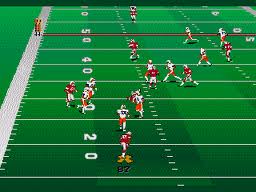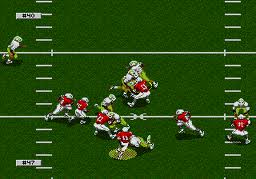Menu

Cliffhanger
A cliffhanger or cliffhanger ending is a plot device in fiction which features a main character in a precarious or diffiRead more
A cliffhanger or cliffhanger ending is a plot device in fiction which features a main character in a precarious or difficult dilemma, or confronted with a shocking revelation at the end of an episode of serialized fiction. A cliffhanger is hoped to ensure the audience will return to see how the characters resolve the dilemma.
Some serials end with the caveat "To Be Continued..." or "The End?" In movie serials and television series the following episode sometimes begins with a recap sequence (e.g., "Previously on L. A. Law").
Ssega
2015-02-20 23:29:03
42.6k










Cliffhanger

Coach K College Bask...
Coach K College Basketball was the first college basketball video game developed by EA Sports spun off from their NBA LiRead more
Coach K College Basketball was the first college basketball video game developed by EA Sports spun off from their NBA Live engine. Originally released in 1995, Coach K College Basketball was the first college basketball game created for Sega Genesis. Endorsed by Duke head basketball coach Mike Krzyzewski, the game featured 32 officially licensed teams in addition to eight classic teams.
Ssega
2015-02-20 23:29:45
126.8k










Coach K College Basketba...
College Football USA 96
College Footballs Nation...

College Slam
College Slam is a college basketball (console exclusive) game published by Acclaim. Its game play is nearly identical toRead more
College Slam is a college basketball (console exclusive) game published by Acclaim. Its game play is nearly identical to NBA Jam, (in which it can also be considered a 3rd sequel). It includes most major Division I colleges, but there are many, such as the University of Tennessee, the University of Notre Dame, and Mississippi State University (who had just made a run to the Final Four that year), that are not included. The player can play tournaments, a season, or a single game. The game, however, did not enjoy the success of NBA Jam.
Initially released for the Super Nintendo and the Sega Genesis, it was later released for the Game Boy, Sega Saturn, Sony PlayStation, and PC.
Ssega
2015-02-20 23:29:45
51.2k










College Slam
Columns 3 - Revenge of C...
Congo The Game - Beta

Crazy The Hedgehog
Crazy the Hedgehog is a hack led by another hacker, Chaoxilla, with support and additional leadership by me, Xeta HedgehRead more
Crazy the Hedgehog is a hack led by another hacker, Chaoxilla, with support and additional leadership by me, Xeta Hedgehog. Chaoxilla doesn't have an account anywhere, so I'm representing this for him.
Ssega
2016-06-18 20:05:27
187.1k










Crazy The Hedgehog

Crying
Crying (also called sobbing, weeping, wailing, whimpering, bawling, or blubbering) is the shedding of tears in response Read more
Crying (also called sobbing, weeping, wailing, whimpering, bawling, or blubbering) is the shedding of tears in response to an emotional state in humans. The act of crying has been defined as "a complex secretomotor phenomenon characterized by the shedding of tears from the lacrimal apparatus, without any irritation of the ocular structures". A related medical term is lacrimation, which also refers to non-emotional shedding of tears.
A neuronal connection between the lacrimal gland (tear duct) and the areas of the human brain involved with emotion has been established. Some scientists believe that only humans produce tears in response to emotional states, while others disagree. Charles Darwin wrote in The Expression of the Emotions in Man and Animals that the keepers of Indian elephants in the London Zoo told him that their charges shed tears in sorrow.
Tears produced during emotional crying have a chemical composition which differs from other types of tears. They contain significantly greater quantities of the hormones prolactin, adrenocorticotropic hormone, Leu-enkephalin, and the elements potassium and manganese.
Ssega
2015-02-20 23:29:42
14.2k










Crying

Cutie Suzuki no Ring...
Cutie Suzuki no Ringside Angel (キューティー鈴木のリングサイドエンジェル?, "Cutie Suzuki's Ringside Angel") is a 1990 Japan-exclusive Sega MRead more
Cutie Suzuki no Ringside Angel (キューティー鈴木のリングサイドエンジェル?, "Cutie Suzuki's Ringside Angel") is a 1990 Japan-exclusive Sega Mega Drive video game about female professional wrestling. It features the famous female Japanese wrestler Cutie Suzuki.
As the first video game based on women's professional wrestling for the Sega Mega Drive, it played a pivotal role in establishing females as protagonists in 16-bit video games.
Ssega
2015-02-20 23:29:04
57k










Cutie Suzuki no Ringside...

Cyborg Justice
Cyborg Justice is a side-scrolling beat 'em up video game developed by Novotrade and released in 1993 for the Sega Mega Read more
Cyborg Justice is a side-scrolling beat 'em up video game developed by Novotrade and released in 1993 for the Sega Mega Drive.
Ssega
2015-02-20 23:29:04
48.3k
















